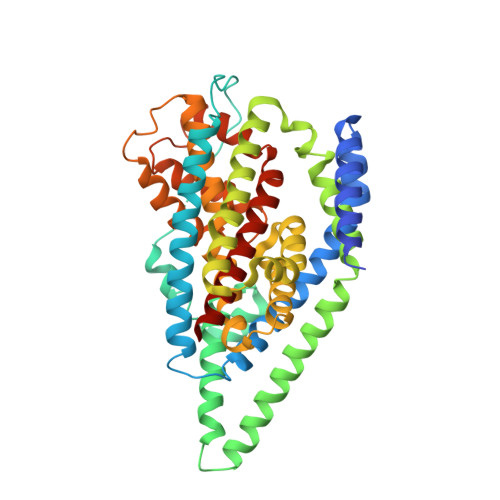Coupling substrate and ion binding to extracellular gate of a sodium-dependent aspartate transporter.
Boudker, O., Ryan, R.M., Yernool, D., Shimamoto, K., Gouaux, E.(2007) Nature 445: 387-393
- PubMed: 17230192
- DOI: https://doi.org/10.1038/nature05455
- Primary Citation of Related Structures:
2NWL, 2NWW, 2NWX - PubMed Abstract:
Secondary transporters are integral membrane proteins that catalyse the movement of substrate molecules across the lipid bilayer by coupling substrate transport to one or more ion gradients, thereby providing a mechanism for the concentrative uptake of substrates. Here we describe crystallographic and thermodynamic studies of Glt(Ph), a sodium (Na+)-coupled aspartate transporter, defining sites for aspartate, two sodium ions and d,l-threo-beta-benzyloxyaspartate, an inhibitor. We further show that helical hairpin 2 is the extracellular gate that controls access of substrate and ions to the internal binding sites. At least two sodium ions bind in close proximity to the substrate and these sodium-binding sites, together with the sodium-binding sites in another sodium-coupled transporter, LeuT, define an unwound alpha-helix as the central element of the ion-binding motif, a motif well suited to the binding of sodium and to participation in conformational changes that accompany ion binding and unbinding during the transport cycle.
Organizational Affiliation:
Department of Biochemistry and Molecular Biophysics, Columbia University, 650 West 168th Street, New York, New York 10032, USA.

















